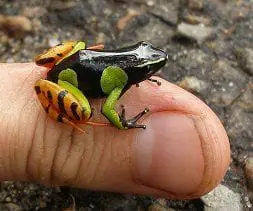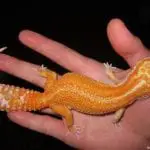There are plenty of colorful exotic creatures that are great as pets simply because of how wonderful they look. The moment you look at them, you just cannot keep your eyes off them because of how beautifully colorful they are as they explode at you with a variety of colors that can be difficult to say no to. and when it comes to the most beautiful types of exotic pets out there, the frogs of the genus Mantella stand as some of the best pets you can aesthetics-wise.
If you know your basics when it comes to amphibians and other exotic pets, the more colorful they are, the more dangerous they seem to be. This is true for the Mantella frogs as their colorful skins will immediately tell you that they are poisonous animals. Nevertheless, you do not have to worry about them so long as you have no plans to eat them. Of course, keeping these frogs means that you plan on taking good care of them. As such, here are our tips for keeping up with the poison frogs of the genus Mantella.
Overview
The Mantella frogs are a species of amphibians that are mostly confined in the island of Madagascar, which is home to over 200 species of frogs that you cannot see anywhere else in the entire world. There are a total of 16 known types or genus of Mantella frogs, and all of them have their own distinct colors and appearances. Most, if not all, of those frogs, live in the eastern portion of Madagascar because they prefer to stay in tropical forests. However, there are some that are able to survive and adapt to the dry conditions of some of the other parts of Madagascar.
What makes the Mantella frogs so popular is that they have colorful skins that seem to attract the eyes of any exotic pet enthusiast. However, that is only true when it comes to humans since these frogs are colorful enough to tell potential predators that they are toxic or poisonous. On top of how colorful they are, they also follow a diurnal behavior and are mostly awake during the day, while most other frog species are nocturnal.
Physical Description

The Mantella frogs of Madagascar are small species of amphibians. They are usually somewhere close to half an inch to just a bit over an inch long as these tiny frogs really are some of the smallest amphibians in the world. You can easily tell the females from the males apart as these frogs display sexual dimorphism in the sense that the females are usually larger than their male counterparts.
In terms of their color, there really is no specific color or marking that the Mantella frogs follow. The color of these frogs depends on their species. Colors can range from red, orange, green, yellow, brown, blue, black, and white while the markings on their skin vary depending on the species. Mantella frogs are colorful enough to allow them to blend together with their surroundings, depending on where they usually stay. However, their colors are also used to signify potential predators that they are toxic and will poison anyone who tries to come close to eating them.
The Mantella frog’s skin tends to be smooth and glossy regardless of the genus. On top of that, their skin also excretes a toxic substance that makes them poisonous amphibians. In that regard, they may be poisonous to eat for predators but are safe to touch. This sets them apart from venomous animals whose bites are dangerous. In comparison, the mantilla frog is only dangerous when eaten, but they are not venomous animals.
Diet

Mantella frogs are similar to a lot of other species of frogs in the sense that they have a voracious appetite. They are tremendous eaters that will not stop eating as long as there is food in front of them. That means that you have to be extra careful when feeding these frogs as placing too much food can potentially lead to obesity due to how they seemingly cannot help but eat.
When feeding mantilla frogs, it is important to give them a varied diet that is composed of different types of insects. These amphibians are similar to many frogs in that they follow a carnivorous diet that is focused mainly on insects. That means that you should feed them all sorts of insects and invertebrates that are small enough to fit their mouths. You can choose insects such as crickets, fruit flies, spiders, waxworms, and termites. Actually, any invertebrate will do so long as it is small enough for your frog.
While Mantella frogs do thrive on a diet that is based on insects and invertebrates, you have to supplement its nutrition with vitamins. Crickets tend to be inadequate in terms of nutrition and must be dusted with supplements such as calcium and vitamin D3. You can also gut-feed the insects and the invertebrates, but doing so isn’t actually necessary.
Because of how voracious of an eater the Mantella frog is, you have to keep an eye on its health. A single frog can eat as much as half a hundred ants in just 30 minutes. That means that monitoring how frequent it is eating is important. You may want to feed these ants about twice a week, but make sure to do so in small quantities. Some may be fed once every two to three days, depending on how large the meal is.
Habitat

When you are providing your Mantella frog with a place to live in, make sure that it makes the amphibian feel like it is in a natural kind of environment. That means that you should place it in a habitat that is as close to what it naturally experiences in the wild as possible. This will allow the Mantella frog to behave naturally and to feel safe and secured even though it is inside an artificial environment.
Housing the Mantella frog in a terrarium that is at least 10 gallons if you are planning on getting two or three frogs. These are small frogs, but they may need an environment that is at least large enough that they will feel some sort of security. If you are planning on taking care of only one Mantella frog, keep it in a smaller tank that is about half the size of one you would use if you were to house two or tree frogs. Meanwhile, larger groups should naturally be placed in a larger terrarium.
Make sure that the terrarium’s top is as secured as possible. That is because the Mantellafrog is a really good climber even though it is a terrestrial animal. It can easily scale the walls of a terrarium and can escape when given a chance to do so. That is why it is important that you keep the terrarium as secure as possible to make sure that the frog does not have a chance to escape.
When decorating the terrarium with water for the frog to use for drinking, make sure that you make it as shallow as possible because the Mantella frog does not handle staying in deep waters really well. They are poor swimmers and will drown easily when left in a water dish that is deep enough. As such, use a very shallow water dish when providing your Mantella frog with water for drinking.
Placing lots of plants inside the Mantella frog’s habitat is a good idea when you are decorating its terrarium. Make sure to pack the terrarium with dense vegetation, but make sure that the plants are safe for your frogs. Having enough plants inside the terrarium will allow the Mantella frog to feel as safe as possible and will also allow you to observe it well enough because it will act like it is in its natural environment. And when providing a substrate, use coconut husk if you do not know where to get commercially sold rainforest substrate.
Heating, Lighting, and Humidity
The Mantella frogs thrive in the tropical climate of Madagascar and should be provided with a terrarium with the right levels of heat, light, and humidity to make it feel like it is living in a natural environment and to allow it to feel happy living in a terrarium that feels as natural as possible.
When providing light for your Mantella frog, you can use a UVB lamp that emits lower levels. You should also use a fluorescent bulb to provide enough light and heat to the terrarium. A small incandescent bulb can also do but make sure that it does not emit lots of heat so as to keep the temperature levels somewhere close to 68 to 76 degrees Fahrenheit. As much as possible, the ambient temperatures inside the terrarium should not exceed 80 degrees. Mantella Frogs love humid environments because of how used they are to living in tropical rainforests. This means that you should house it in a terrarium that has humidity levels of about 80 to 100 percent. The best way to keep humidity levels up is to mist the terrarium as much as possible. Make sure that the substrate does not dry up so as to make sure that the terrarium is as humid as possible.



